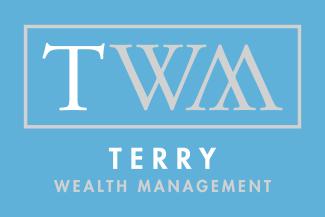
Conducting a Midyear Financial Checkup
As we’ve passed the midpoint of the year, now is the perfect time to assess your financial well-being by conducting a review.
Just like a routine health checkup can ensure your physical health, a financial checkup can help you evaluate how your finances are doing so you can make any necessary adjustments. Even better, it can give you the peace of mind you need to tackle the rest of the year with confidence.
The benefits
A midyear financial checkup allows you to pinpoint ways you can better stay on track with your financial goals for the year. By reviewing your situation, you can identify any nonessential expenses, cut back on overspending, and develop strategies to save more effectively going forward. This early detection is key to resolving issues before they can snowball into major problems. When you’re able to identify red flags, you can adjust your spending habits now to avoid ending the year in a worse financial situation. To help with this, here are three key financial areas worth looking into this month.
Examine your budget and spending habits
If you currently follow a budget, take the time to evaluate how well you stuck to it for the first half of the year. Assemble your monthly billing statements, receipts, and any other financial documents to help you better understand what your income has been going toward. If you find that you aren’t keeping within your budget, look for any spending patterns and unnecessary expenses that may be impeding your financial progress. Then determine where you can cut back and redirect funds toward your savings or debt repayment. And if your budget simply doesn’t work for you anymore, adjust it, and perhaps your goals, to better align with your current financial situation, which may ultimately help you allocate your funds more efficiently.
Look at your savings and debt
Savings are an essential safety net, so check in on your progress toward increasing them. Your emergency fund should contain at least three to six months of your total expenses. If you had to dip into your savings during the first half of the year for any unexpected expenses, create a plan to set aside a little more each month to help you build it back up sooner rather than later. It doesn’t have to be a lot; even transferring an additional $20 each week into your savings account can go a long way over time.
You may also want to review your total debts, such as credit card balances, student loans, and mortgage payment amounts, to help you better strategize how to pay them down. For instance, it’s always a good idea to pay off credit cards each month because these tend to have high interest rates. If you’ve been letting your balance build up, try finding ways to cut back on your spending to help you better stay on top of it.
Assess your investments
Finally, analyze the performance of your investment portfolio, including your retirement accounts, stocks, bonds, and any other investments you may have. For each one, evaluate whether it is generating satisfactory returns, and consider rebalancing, if necessary, to help ensure your current asset allocation aligns with your risk tolerance and financial objectives. Also, you typically want to contribute the maximum amount to tax-favored retirement plans, such as 401(k) and IRA, so see how you can adjust your spending to help you better reach that goal. At the very least, you may want to increase the amount you contribute to any employer-matched retirement accounts.
As a midyear financial review is intended to help you better achieve your personal goals, it’s imperative that you’re honest with yourself throughout the process. If you find you’re underperforming in one area, don’t be afraid of making changes and adjusting accordingly. And if you need additional assistance, reach out to a financial advisor who can provide expert advice tailored to your specific situation.
Important Disclosures
The opinions voiced in this material are for general information only and are not intended to provide specific advice or recommendations for any individual. To determine which investment(s) may be appropriate for you, consult your financial professional prior to investing.
Contributions to a traditional IRA may be tax deductible in the contribution year, with current income tax due at withdrawal. Withdrawals prior to age 59 ½ may result in a 10% IRS penalty tax in addition to current income tax.
Rebalancing a portfolio may cause investors to incur tax liabilities and/or transaction costs and does not assure a profit or protect against a loss.
This article was prepared by ReminderMedia.

